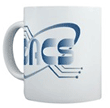September 2007
General Meeting by Chris Novell At one time or another, we have all probably searched for a product or service where we wanted it to be a certain way, a certain quality…where we had expectations of a certain standard being met. When it comes to the availability of medical image management, nearly anything that one might have in mind is actually attainable. Imagine having an X-ray taken or a mammogram done in the morning at the request of a doctor on the East Coast and getting a second opinion by a doctor on the West Coast five minutes later! By using the most modern technology, this could be accomplished. The details of the blue-chip process were explained at the August DACS General Meeting by Ed Heere, long time DACS leader and member and founder, president and CEO of CoActiv Medical. The process starts with the use of any DICOM compliant digital modality, such as CT, MRI, Ultrasound, or computed radiography technology (CR). CR replaces the old style film-based X-ray and makes use of a sensitized imaging plate the same size as the former X-ray plates to create the visual representation. The imaging plate is promptly put through a CR-Reader attached to a computer to scan and digitize the image. The image can then be manipulated with brightness and contrast adjustment as well as by zoom and rotation, very much like what can be done to enhance any uploaded digital picture. The scanned image is then saved as a digital file, and the plate itself, by exposing it to special fluorescent lighting, can be erased and then can actually be reused many, many times, which correspondingly increases its economic appeal. Ed’s company employs DICOM (Digital Imaging and Communications in Medicine), a comprehensive set of standards for handling, storing, and transmitting information in digital imaging. Using these standards, the medical images make use of Using PACS gives hospitals and imaging centers several significant benefits: an ability to reliably keep accurate track of exam records, accessibility to exam images in seconds, a faster read of the results, an enhanced ability to interpret exam results accurately because of the manipulation tools, and faster access to priors (previous studies) for comparisons. Newer PACS companies, such as CoActiv Medical, have made medical digital imaging available to even the smallest hospitals and imaging centers by lowering the price of this technology. Now any imaging facility can afford to make the transition from film-based radiology to PACS digital imaging. Availability of low cost RAID (Redundant Array of Independent Drives) array systems has been an incentive to discontinue use of older, expensive, automated but often unreliable, DVD jukeboxes and tape libraries. CoActiv has the unique distinction of providing Quad-Redundant Archiving, which includes both on and off-site storage as well as multiple archival DVDs, all located in geographically disparate locations. Though the audience had already been listening quietly and attentively, it grew silent as Ed served up on the screen the first 3D reconstructed CT PACS image - that of a brain, slowly rotating the image around and zooming in to allow all observers a more detailed and exacting view. The images that can be created are so revealing that exploratory surgery is fast becoming an extinct event. Seldom is a system so robust and reliable in its design and implementation. CoActiv’s standard remote monitoring procedure is automatic “checkups” to ascertain quality of system functioning. Multiple key settings are reviewed on key servers and workstations regularly. This onsite monitoring is also remotely checked by an automated application running from the remote data centers. A potential problem will be discovered before it has time to take up residence. CoActiv’s PACS solution also gives a health organization the ability to attach scanned administrative documents and other types of files, such as email messages, to further amplify and accelerate the content to a comprehensive package of information. The combination of DICOM compliant radiological imaging modalities, such as CT, MRI, US and CR (computed radiography) and the most sophisticated software and properly designed and implemented IT infrastructures and backup technology has enabled CoActiv to position itself strategically in the medical imaging profession. |
Mugs and more, visit CafePress to order
